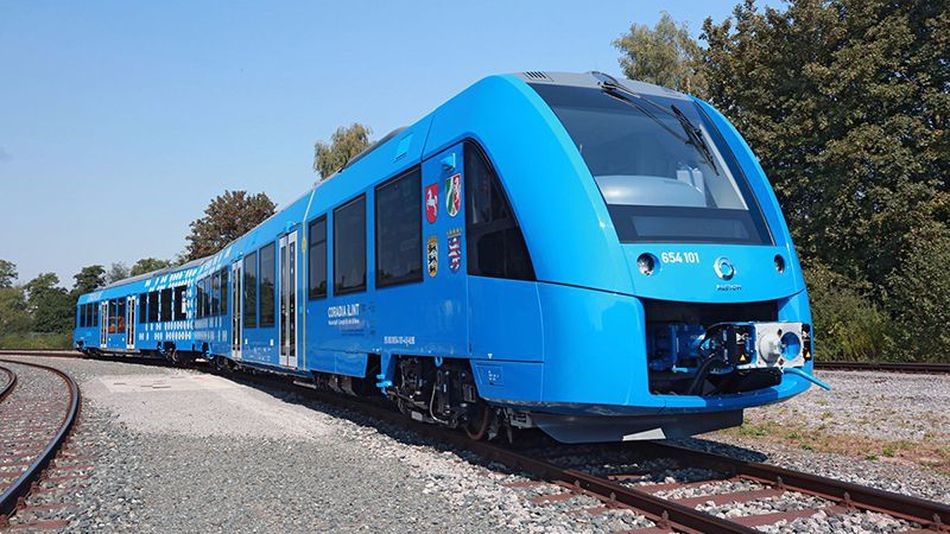
Article posted by
Modern trains are a world apart from the steam locomotives that once dominated transport. Despite the misery of a delayed train on your way to work now and again, few can deny the convenience and speed of modern train travel. And we’re spoiled for choice with a total of 5,263 train stations in the UK alone. The busiest station in Europe is Gard du Nord, France, which serves around 180 million travellers each year. Advanced technologies are paving the way for new, futuristic trains and they may be ready sooner than you think.
Self-driving trains
Self-driving trains are being used in some countries and driverless trains were tested on London’s rail network for the first time in 2017. Partially automated trains are used on the Tube, operating on four lines including Victoria and Northern. Docklands Light Rail (DLR) is an automated system, that has been open since 1987. There are further plans to bring automated trains to London’s mainline network. Also, London design agency Priestman Good have unveiled their new tube train design, which could one day go driverless. It’s expected their design for trains will be in use by the 2020s. At present, only 6% of the world’s transit rails operate automated trains. Vancouver and Copenhagen are two cities that have already made the jump and have their own automated train system.

One of the key benefits of driverless trains is passengers have more space. Removing the driver’s cab gives passengers 4-6% more room. This might help alleviate packed trains, especially in the dreaded rush-hour. Vancouver’s Sky Train is an excellent example of what driverless trains can do. Sky Train is one of the oldest, fully-automated rail systems. On average, 95 per cent of the trains arrive on time with no delays. Widespread adoption of self-driving trains could mean less waiting around on platforms. The UK is set for a driverless future and trains will play a massive role in improving transportation.
Maglev
Maglev trains could revolutionise transport. Imagine a train that floats above the tracks and glides smoothly without ever touching the rail. You could potentially travel from New York to LA in a just a few hours. That’s the kind of horsepower this technology offers. In Maglev, superconducting magnets repel the train from the tracks, creating a smoother and faster ride. Believe it or not, but maglev trains are not a new idea. There were patents for these high speeds rail systems as far back as 1907. Over 100 years later and the technology still hasn’t truly hit the mainstream. China and Japan are the only countries with full maglev systems in operation. The Shanghai maglev train in China line boasts outrageous speeds of 300mph. Elon Musk’s Hyperloop concept also uses maglev to achieve the same effect. Many companies are trying to create the first commercial hyperloop. Space X, Hyperloop One and Hyperloop Transportation Technologies are the front-runners in the race to develop the technology.

These systems have advantages over traditional train technology. As maglev trains do not come in contact with the tracks, there are lower maintenance costs because there are less wear and tear. There are more systems planned throughout the world, such as in Australia and Puerto Rico. If successful, we could see a new generation of high-quality, supersonic trains.
Hydrogen Trains
Eco-friendly hydrogen trains could ensure a more sustainable future. Hydrail is the term used for all hydrogen-powered vehicles. It first became well-known in 2005 after the first annual international hydrail conference in North Carolina. Since then, the move towards hydrogen has gained momentum. The UK government have voiced their ambition to make hydrogen trains ‘a priority’ in the future. Chris Grayling, the UK Transport Secretary has said he expects to see hydrogen trains introduced to railways in the future.

Hydrogen trains offer reduced noise pollution and emissions. Hydrail works by using electricity to split water into hydrogen fuel, which is then transferred to the vehicle’s tank. The hydrogen then generates the electricity to power the vehicle, using fuel cells. Hydrogen is used as both the fuel and the source. There is no combustion process, as the emission is simply water vapour. The main benefit of hydrogen power is efficiency. The world’s first hydrogen train completed a trial run in Germany in 2017. Hydrogen-powered trains are set to run on German rails from 2021. The trains, named Coradia iLint can cover up to 1,000 kilometres with one tank of hydrogen and can hit a maximum speed of 140 kilometres per hour. Hydrogen trains could offer a solution to many of the engineering challenges faced in railway transport. These include meeting sustainability objectives and providing faster transport for all.
As a society, we must keep making improvements to our transport systems to keep up with population growth and quality of life. Trains have undergone revolutionary changes, with countless designs improving on the work of earlier pioneers. The future of rail travel could be sublime if our cities are serviced by high speed and fully automated trains. Alongside IoT applications and robotics, the outlook for the future is one of futuristic revolution.
We’re here if you need help defining a role or brief, specialist insight to help shape your ideas or expert help with your recruitment process. Just get in touch to arrange a conversation with one of the team or if you’re ready for us to find the perfect person for you, send us your brief.
If you’re looking for your ideal job send your CV to us to get started or search for the latest job vacancies and we’ll get the ball rolling.